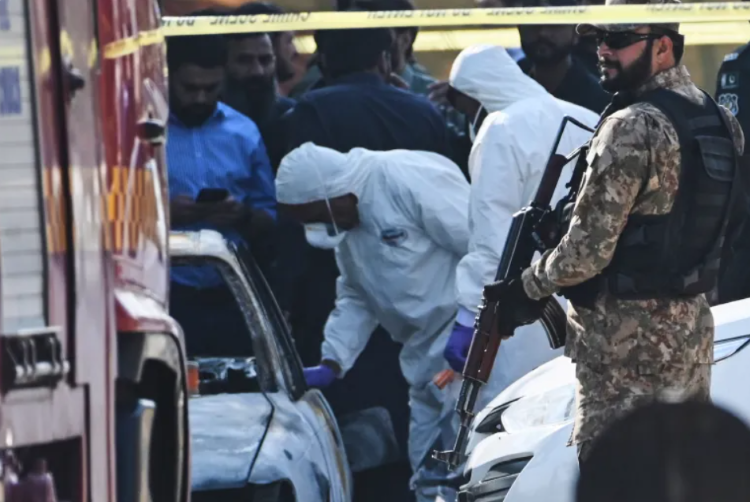The longest government shutdown in the nation’s history may soon be over. Once it is, federal museums and monuments will reopen. SNAP payments will start flowing again. And tens of thousands of essential federal employees, including air traffic controllers, will get paid for the first time since October.
But air travel won’t go back to normal anytime soon.
Airport disruptions have been the most visible effect of the government shutdown since it began on October 1st. Since then, a growing proportion of air traffic controllers have taken time off rather than work at a job that doesn’t pay. Staffing levels were already critical at many facilities before the shutdown. The added burden of unscheduled callouts has caused an immediate increase in flight disruptions.
In mid-October, when we first started tracking the effects of the shutdown on air traffic, about one in 10 flights were delayed or canceled — double the disruption rate from the same time last year. But now every air traffic controller in the country hasn’t been paid in at least six weeks. Staffing shortages have impacted operations at half of the nation’s “Core 30” airports. On Halloween, nearly 80 percent of air traffic controllers were absent at the facilities that control the airspace over New York.
Air travel won’t go back to normal anytime soon
To try and mitigate the impact of staffing shortages, Transportation Secretary Sean Duffy mandated that airlines cut up to 10 percent of their flight volume over the next few weeks. But it’s not likely to be effective.
“It’s really gonna have a negligible impact for the amount of volume that air traffic controllers are dealing with, especially as the volume ramps up as we get around the holidays,” said Marcus Miller, an air traffic controller who posts TikToks as @prophatcat.
On Truth Social, President Donald Trump attempted a combination of threats and incentives to get controllers back to work.
“For those Air Traffic Controllers who were GREAT PATRIOTS, and didn’t take ANY TIME OFF for the ‘Democrat Shutdown Hoax,’ I will be recommending a BONUS of $10,000 per person,” he posted on the evening of November 10th. “For those that did nothing but complain, and took time off … I am NOT HAPPY WITH YOU.”
But they have been unable to stop the commercial aviation system from approaching a complete meltdown. On November 7th, the four largest US carriers canceled or delayed almost 40 percent of their flights, according to the flight tracking app Flighty. Two days later, on the 9th, they canceled half of their entire schedule. In the last four days, an average of 2,100 flights have been canceled every day, and 8,800 have been delayed. (For context, the daily averages for this time last year were 200 cancellations and 3,000 delays).
Every delay and cancellation cascades through the system. Most airlines try to keep their airplanes in the air for 12 hours or more every day; maximum time aloft means maximum time generating revenue. Similarly, airlines want to keep their pilots as busy as possible, up to the federally mandated limit of eight hours flying time per “duty period.”
Airlines employ PhDs in math, computer science, and other quantitative fields to build sophisticated operational models that ensure that every part of their operation is optimized for efficiency and profitability. These models are planned out weeks to months in advance. And they assume normal levels of disruption — cancellation rates closer to the 2024 average of 1 percent, for example.
When disruptions occur, recovery can be complex. It’s not possible for airlines to simply “reset” their fleets at the end of a day. They would waste millions of dollars on empty flights and crew rescheduling. Often, the only choice they have — financial, operational, or both — is to slowly recover over the course of multiple days. The major winter storm that overwhelmed Southwest’s scheduling systems in 2022 caused disruptions for nine days. And the CrowdStrike outage, which only lasted a few hours, led to several days of issues for most airlines.
The government shutdown is an entirely different beast. It is not isolated to one airline or one single day. Its effects have compounded for six weeks, impacting every airline everywhere in the country. And they will continue compounding until air traffic controllers are back to work at full strength.
So even if the shutdown ends tomorrow, aviation won’t get back to normal for a while — at least a few days, possibly a few weeks. It’s possible that disruptions will continue all the way until Thanksgiving. And with more than 31 million people expected to fly this year, the holiday may plunge an already overstressed system back into crisis.
“Air traffic controllers don’t like being in the news,” said Miller. “If politicians want to shut down the government because of X, Y, and Z, then go for it. But don’t touch air traffic control. That just hurts everybody.”















